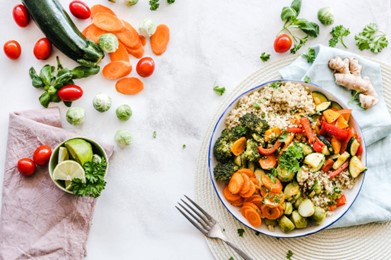Managing diabetes involves making smart dietary choices that help control blood sugar levels and improve overall health. One key component of a diabetes-friendly diet is fiber. This article will explore the vital role of fiber in diabetes management, focusing on how it can benefit blood sugar control, what types of fiber are best, and practical ways to incorporate more fiber into your daily meals.
Why Fiber Matters for Diabetes?
Fiber is a type of carbohydrate that the body cannot digest. Unlike other carbohydrates, fiber doesn’t raise blood sugar levels. Instead, it slows down the absorption of sugar, leading to more stable blood glucose levels. For people with diabetes, managing blood sugar levels is crucial to avoiding spikes and crashes that can lead to complications.
Types of Fiber and Their Benefits
There are two main types of dietary fiber: soluble and insoluble. Both play important roles in managing diabetes:
- Soluble Fiber: This type dissolves in water and forms a gel-like substance in the digestive tract. It helps to slow the absorption of sugar, which can aid in blood sugar control. Foods high in soluble fiber include oats, barley, beans, lentils, apples, and carrots.
- Insoluble Fiber: This type does not dissolve in water but adds bulk to the stool, helping to prevent constipation. It also supports overall digestive health. Foods high in insoluble fiber include whole grains, nuts, seeds, and vegetables like broccoli and celery.
The Impact of Fiber on Blood Sugar Levels
Fiber-rich foods can improve blood sugar levels in several ways:
- Slow Digestion: Fiber slows the digestive process, which helps to prevent rapid spikes in blood sugar levels.
- Increased Satiety: High-fiber foods make you feel fuller for longer, which can help with weight management—a critical factor in diabetes control.
- Improved Insulin Sensitivity: Some studies suggest that a high-fiber diet may improve insulin sensitivity, making the body’s insulin more effective.
How Much Fiber Should You Aim For?
The American Diabetes Association recommends that people with diabetes aim for 25-30 grams of fiber per day. However, individual needs may vary, so it’s a good idea to consult with a healthcare provider or a dietitian to tailor fiber intake to your specific needs.
Incorporating More Fiber into Your Diet
Adding more fiber to your diet doesn’t have to be complicated. Here are some practical tips:
- Choose Whole Grains: Opt for whole-grain bread, brown rice, and whole-wheat pasta instead of refined grains. Whole grains are higher in fiber and nutrients.
- Snack Smart: Instead of reaching for chips or candy, try snacking on raw vegetables, fruits, or nuts. These options are naturally high in fiber.
- Add Beans and Lentils: Incorporate beans, lentils, and peas into soups, salads, and casseroles. These legumes are excellent sources of soluble fiber.
- Start Your Day with Fiber: Begin your day with a high-fiber breakfast, such as oatmeal or a smoothie made with fruits and vegetables.
- Read Labels: When shopping, check nutrition labels for fiber content. Look for products with at least 3 grams of fiber per serving.
Practical Considerations
While fiber is beneficial, it’s essential to increase your fiber intake gradually to allow your digestive system to adjust. Drinking plenty of water is also important, as fiber absorbs water and can help prevent digestive discomfort.
Conclusion
Incorporating more fiber into your diet is a simple yet effective strategy for managing diabetes. By choosing fiber-rich foods and following the tips, you can help stabilize blood sugar levels, support digestive health, and improve overall well-being. As always, consult with your healthcare provider before making significant changes to your diet.

Beans are various, suitable plant-based proteins that count the taste, coloring, and consistency of many containers. Dried beans commonly boil anywhere from 45 minutes to 2 hours whereas sacked beans are prepared immediately out of the can, and both are incredibly nutrient-rich. Beans can be counted as the primary protein in a vegetarian dish or utilized in flesh rumors to bulk them up with more protein and fiber.
Foods: Include meals increased in fiber, such as verdant gardens and legumes, to assist with satiety